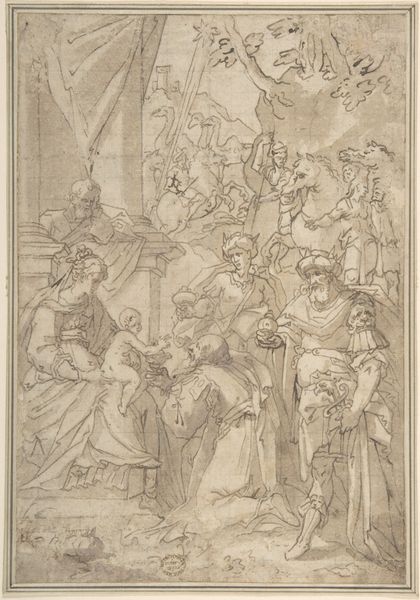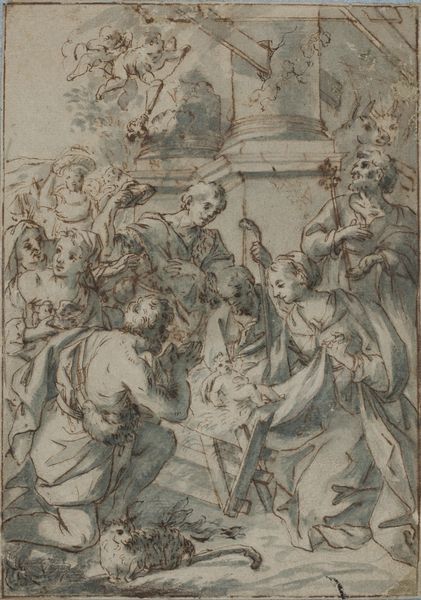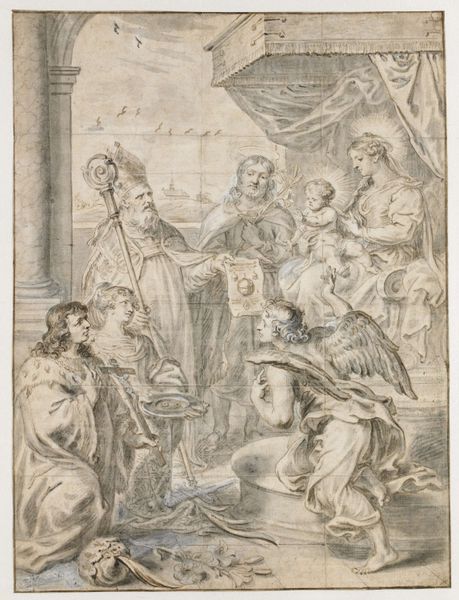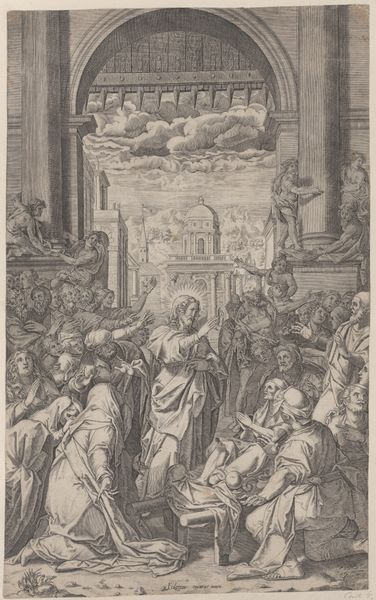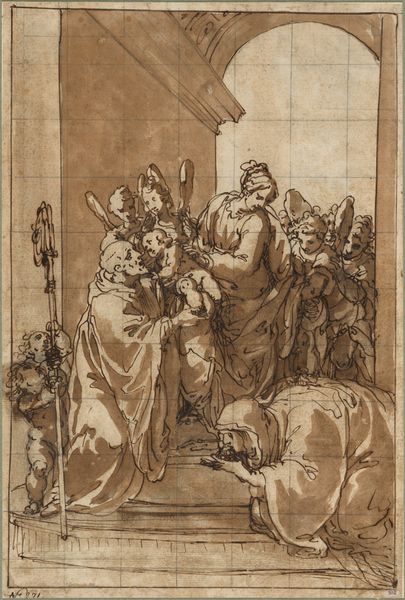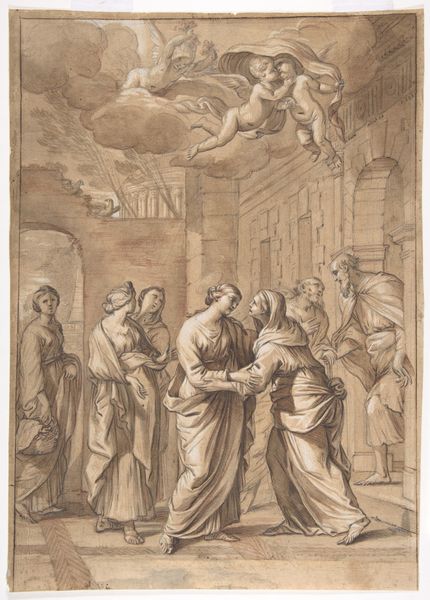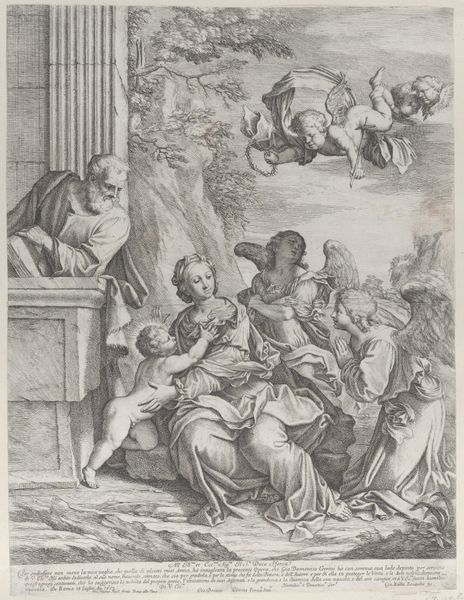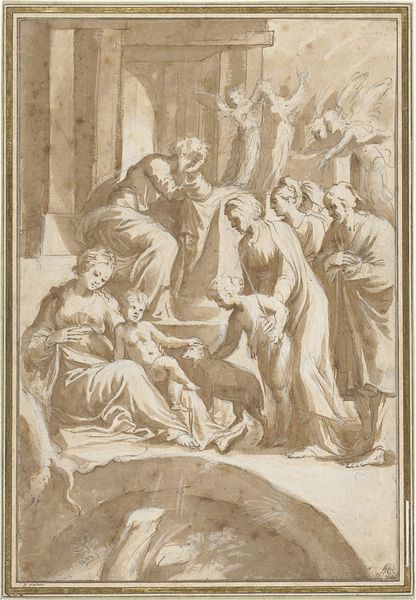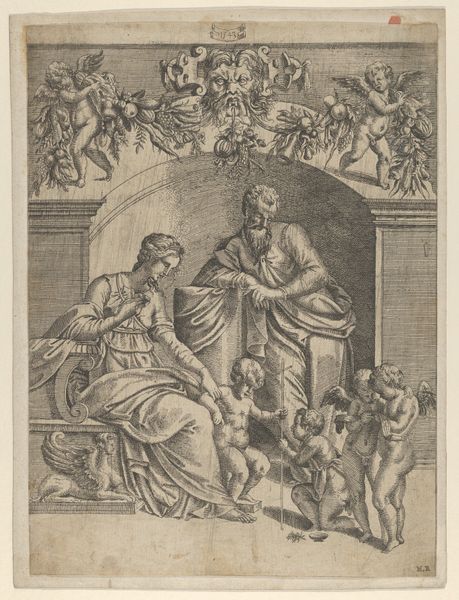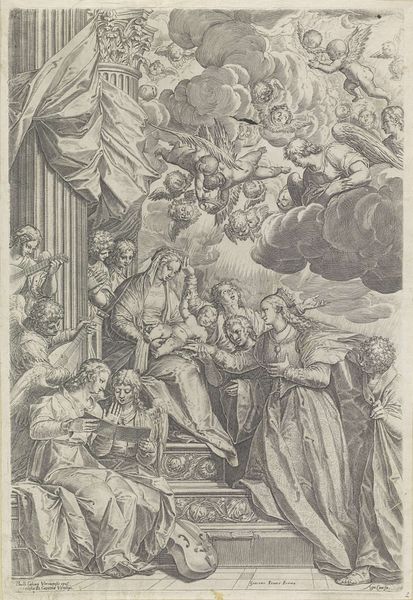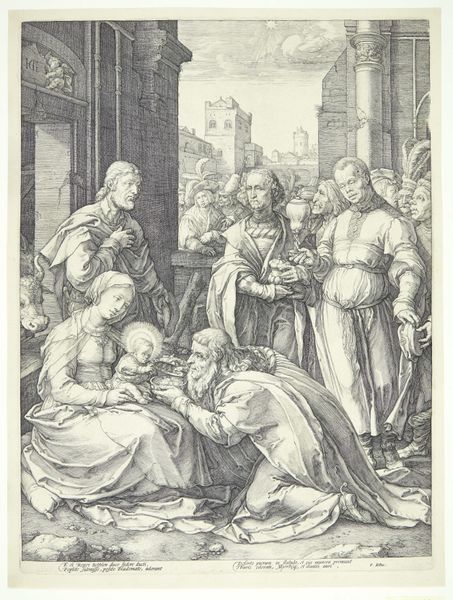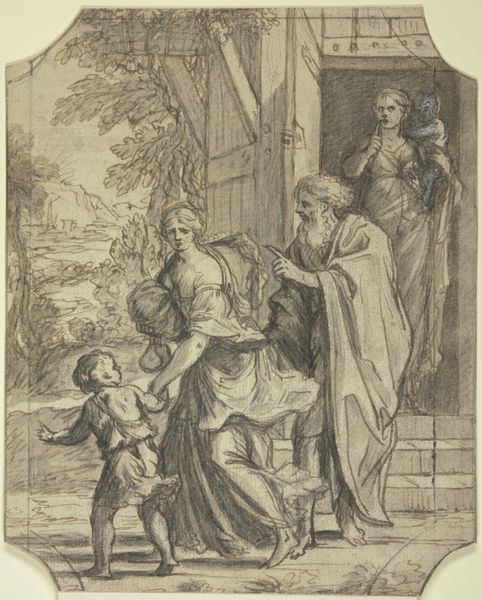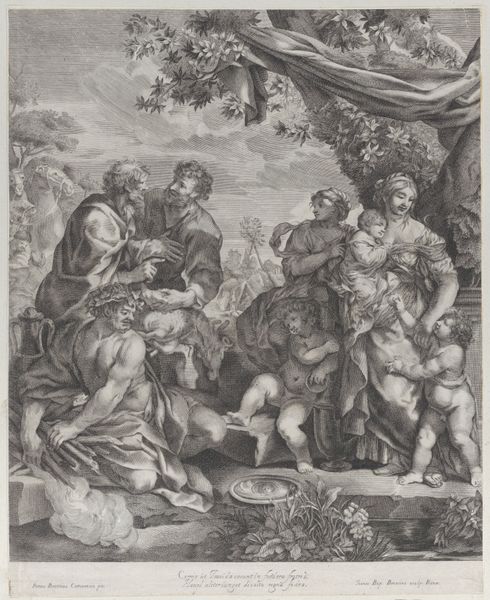
drawing, charcoal
#
drawing
#
charcoal drawing
#
mannerism
#
figuration
#
charcoal
#
history-painting
Dimensions: 475 mm (height) x 345 mm (width) (bladmaal)
Editor: This charcoal drawing, "The Adoration of the Shepherds," by Bartholomeus Spranger, made sometime between 1567 and 1599, is fascinating. I’m struck by how theatrical it feels, almost like a stage setting with the broken architecture. How do you interpret the cultural significance of this setting? Curator: The setting is critical. Spranger was deeply entrenched in Mannerism, a style reflecting the anxieties of its era. The crumbling architecture is no accident. What kind of statement is the artist making by depicting this biblical scene against such a backdrop? Editor: It’s as if the traditional foundations are cracking or being questioned. Does that relate to the patronage system or the art market at the time? Curator: Precisely. Consider how this work challenges traditional depictions of religious narratives, potentially appealing to a specific, perhaps more intellectually inclined, audience within the Habsburg court, a major center for artistic innovation at the time. The elaborate poses, the elongated figures—these weren't accidents. They were strategic choices, reflective of the era’s aesthetic sensibilities and social hierarchies. Editor: So, it’s not just about the religious story, but also about displaying artistic skill and catering to the tastes of elite patrons within a specific cultural context. What is its relation to current public values? Curator: Absolutely. Works like these also highlight how artistic patronage and intellectual movements of the era had close relation to the state's ambitions. That´s why, public access to this art is so relevant. It unveils intricate connections between social powers, cultural identity, and politics. Editor: It's fascinating to see how much history and social commentary is embedded in what I initially perceived as a purely religious scene. I see this artpiece from a different lens now. Curator: Indeed, understanding the public role of art and the politics embedded in its imagery significantly enhances our appreciation. Thanks!
Comments
No comments
Be the first to comment and join the conversation on the ultimate creative platform.

